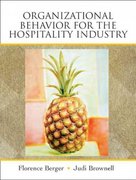Question
Intercultural Communication COMM8190--Final Project Case Study ReadME is a social media app company that distributes copyright-free booksboth classics and new worksamongst its users, similar to
Intercultural Communication COMM8190--Final Project Case Study
ReadME is a social media app company that distributes copyright-free booksboth classics and new worksamongst its users, similar to audible or other apps for Kobo, Kindle or other E- readers. The goal was to encourage young people to read classic novels, and it is also an opportunity to help new writers have a forum for their work and hopefully develop a following. Authors can upload their books and allow the public to read them for a specific period of time. The app is free, but the company makes money from advertisements that pop-up at the end of each chapter. In an effort to prevent the app from becoming a forum for racist or hate-based literature, the company has recently rewritten its content guidelines and have employed new algorithms to search the books for certain words and either delete the books or add warnings about offensive content. These new content guidelines were done in a good faith effort to create a safe space for those using the app. However, one of the side effects of the algorithm used to implement the content guidelines has been an incidental flagging and removing books which contain offensive references to specific ethnic groups: specifically, those who are black or Jewish. While some of the books were actual hate literature, others were considered classics, such as Beloved, by Toni Robinson, or The Apprenticeship of Duddy Kravitz, by Mordecai Richler. No complaints were placed about the books. However, because some of the language in the stories is considered impolite or racist today, the books were removed. This has sparked outrage among readME's users around the world accusing the company of racism and censorship. The company that produced readME is Novo-tech, based in Mobile, Alabama. When the founder, Brandon Wilks', Twitter page is examined by a US-based user, they find numerous old tweets where Wilks has spoken negatively towards black athletes or Jewish politicians, and a few other groups, sometimes using racist or derogatory terms. These tweets were posted when he was in high school, but they still spark outrage among readME's US users, and even a few of Novo-tech's employees. The news media picks up the story, and soon the new content guidelines are seen as a deliberate attempt to silence the voices and experiences of certain ethnic groups. Wilks remains silent on the issue, choosing to delete his Twitter rather than respond to accusations directly. After ordering his workers to fix the algorithm so classic novels won't be deleted, he reaches out to a Public Relations firm based in Ontario, Canada to help recover from this conflict. You are the team leader at the Ontario PR firm called Promo International. You have several long meetings with Wilks over Zoom to discuss solutions. During the conversations, you realize that while Wilks's old Twitter posts are negative and hurtful, he is deeply apologetic for his past statements, and genuinely embarrassed by his immaturity, especially as he now understands how others feel when their race or faith is attacked, or their voices are silenced. He wants to make amends but feels as if it will be impossible now that his old twitter posts have been discovered. He also fears the loss of his company due to the public perception and the shrinking morale in the employees. Some advertising clients have already pulled their ads. Wilks needs your help to respond appropriately and repair the damage that's been done.
Please follow the instructions below:
Your final task in this course will be built around a case study of conflict at an office. While this case is fictional and created for the course, it does not mean that something like this has not already happened before. For your research proposal, review this fictitious case study and find a previous, real- world example of a similar issue. You only need to find one example case study, but you must draw information from at least two separate (credible, in-depth, appropriate) sources on this conflict/example in order to gain different perspectives and help you with the final project. Using this research, you will then fill out the proposal form, which documents the previous example's strategy and relevance to the fictitious case study that will be part of your final project. Research Sources: Appropriate for post-secondary students, at least 750 words for a written source, at least 20 minutes for a video source, credible author and publisher/website/organization.
From the case study above:
1. Title of historic case study: ___________________________________
2. Summary of events of the historic case (at least 250 words):
3. Annotated APA Bibliography for at least two sources on the case study: State the full APA Reference and briefly explain what the article is about.
Source 1 Reference:
-
Source 1 Description:
-
Source 2 Reference:
-
Source 2 Description:
-
5. What are the similarities between the real case you have chosen and the fictional case study?
6. What are the differences to the fictional case study of readME?
7. Name the different (sub)cultures interacting in your historic case study:
8. Do you think your historic case study had a satisfactory ending? Why or why not? Explain your reasoning.
9. Do you think you will approach the situation in a similar manner to the historic example? Why or why not? Explain your reasoning.
Step by Step Solution
There are 3 Steps involved in it
Step: 1

Get Instant Access to Expert-Tailored Solutions
See step-by-step solutions with expert insights and AI powered tools for academic success
Step: 2

Step: 3

Ace Your Homework with AI
Get the answers you need in no time with our AI-driven, step-by-step assistance
Get Started


